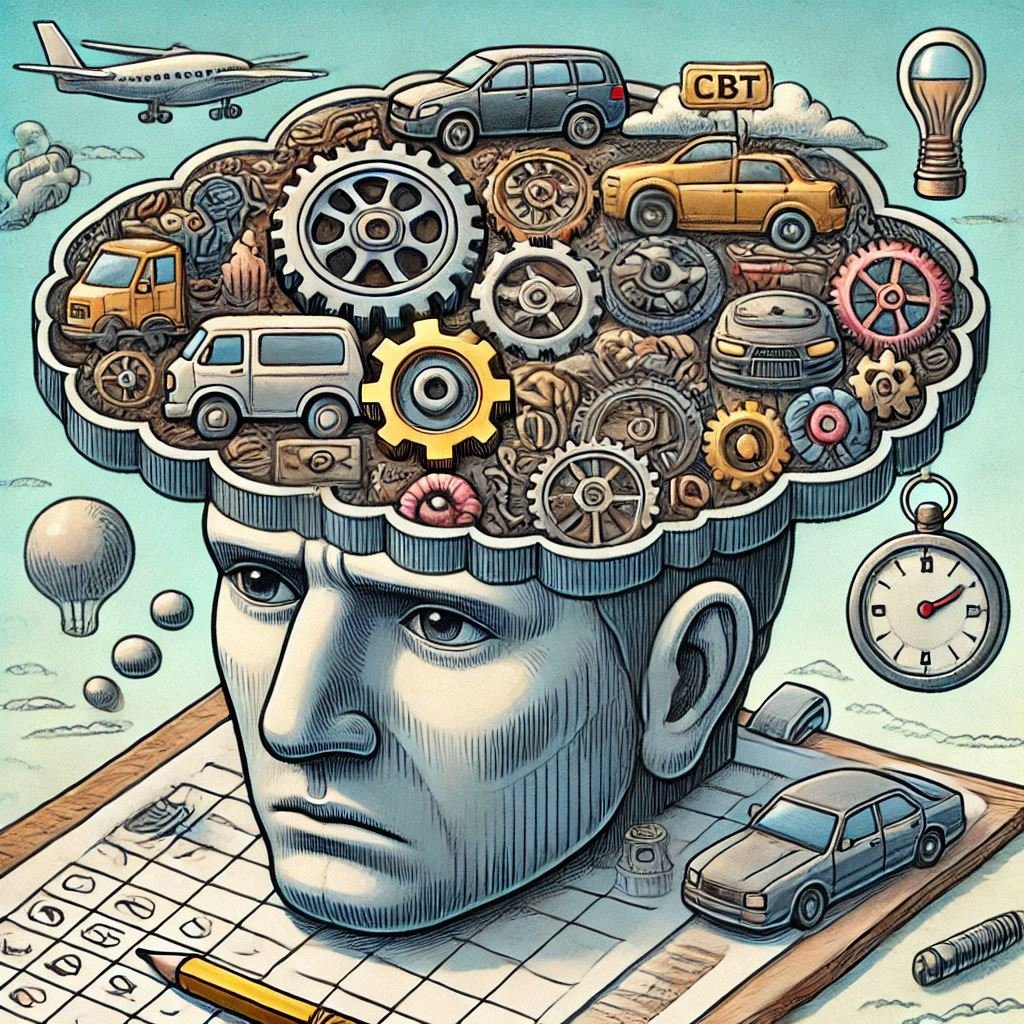Healing Trauma and Addiction with Cognitive Behavioral Therapy
CBT Thought Record
Trauma and addiction often interlace in a complicated dance, each fueling the other in a cycle of suffering and struggle. But there is hope. Cognitive Behavioral Therapy (CBT) stands as a powerful tool for individuals seeking to break free from this cycle and find healing.
Common Triggers
Understanding the triggers is a crucial first step in managing trauma and addiction. Common triggers include:
Stressful Situations: High-pressure environments can heighten anxiety, leading individuals to seek escape through substance use.
Emotional Pain: Unresolved trauma can result in overwhelming emotions, making drugs or alcohol seem like a temporary refuge.
People and Places: Certain people or locations associated with past trauma or substance use can reignite cravings and distress.
Negative Thoughts: Self-critical or hopeless thoughts can drive individuals back to harmful behaviors as a coping mechanism.
Core Values of CBT
CBT focuses on changing thought patterns to influence behaviors and emotions. Its core values include:
Cognitive Restructuring: Identifying and challenging distorted thoughts to develop healthier thinking patterns.
Behavioral Activation: Engaging in positive activities that counteract depressive moods and promote well-being.
Mindfulness: Practicing present-moment awareness to reduce the impact of negative thoughts and emotions.
Skill Building: Developing coping skills and resilience to handle future stressors without falling back on harmful habits.
Using CBT to Heal
The CBT model involves several practical steps that can aid in healing from trauma and addiction:
Identify Negative Thoughts: Keep a journal to track thoughts that arise in response to triggers. Awareness is the first step in addressing them.
Challenge and Change Thoughts: Once you’ve identified negative thoughts, work with a therapist to challenge their validity. Are they based on evidence or distorted by past experiences?
Practice Behavioral Techniques: Engage in activities that bring joy and fulfillment. This could be anything from hobbies to social interactions—whatever helps replace negative behaviors with positive ones.
Develop Coping Strategies: Work on skills like deep breathing, meditation, and progressive muscle relaxation to manage stress and anxiety.
Set Realistic Goals: Break down larger recovery goals into smaller, manageable steps. Celebrate progress along the way, no matter how small.
Therapeutic Support: Regular sessions with a trained therapist can provide guidance, accountability, and encouragement throughout the healing process.
By focusing on these elements, CBT empowers individuals to take control of their thoughts, emotions, and behaviors, leading to significant improvements in mental health and overall quality of life.
Examples of CBT Techniques and Challenging Irrational Thoughts
Cognitive Behavioral Therapy offers several techniques to help individuals identify and change irrational thoughts. Here are a few practical examples:
Thought Records
Situation: Describe the situation that triggered the negative thoughts.
Thoughts: Record the automatic negative thoughts that came up.
Evidence For/Against: List the evidence supporting and contradicting these thoughts.
Alternative Thought: Formulate a more balanced, rational thought.
Example:
Situation: I received critical feedback at work.
Thoughts: "I'm terrible at my job. I'll never succeed."
Evidence For: I did make a mistake in the project.
Evidence Against: My boss has praised my work many times before.
Alternative Thought: "Everyone makes mistakes. I can learn from this and improve."
Behavioral Experiments
Hypothesis Testing: Challenge irrational thoughts by testing their validity through real-life experiments.
Example:
Irrational Thought: "If I try to socialize, people will reject me."
Experiment: Attend a social event and observe people's reactions.
Outcome: Notice that most people are friendly and welcoming, disproving the irrational thought.
Cognitive Restructuring
Identify Cognitive Distortions: Recognize patterns like catastrophizing, overgeneralizing, or black-and-white thinking.
Challenge Distortions: Question the validity of these distortions and replace them with balanced thoughts.
Example:
Distortion: "I failed this test, so I’m a failure in life."
Challenge: "One test does not determine my entire worth. I can prepare better next time."
Mindfulness and Relaxation Techniques
Mindfulness: Practice being present in the moment, reducing the impact of negative thoughts.
Relaxation: Techniques like deep breathing and progressive muscle relaxation can help manage anxiety and stress.
Example:
Mindfulness: Spend a few minutes each day focusing on your breathing and being aware of your thoughts without judgment.
Relaxation: Use deep breathing exercises when feeling overwhelmed to calm the mind and body.
Conclusion
While the journey to healing from trauma and addiction can be challenging, Cognitive Behavioral Therapy offers a structured and supportive path forward. By addressing the root causes and developing healthy coping mechanisms, individuals can move towards a life of recovery and fulfillment.
Remember, you’re not alone in this journey. Reach out for support, embrace the process, and take it one step at a time. Healing is not just possible—it’s within your reach.

